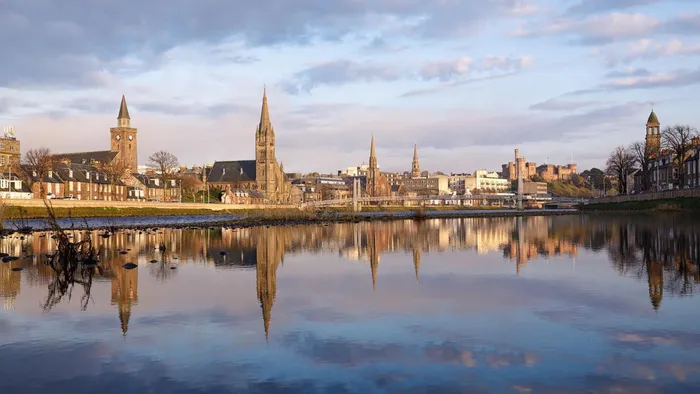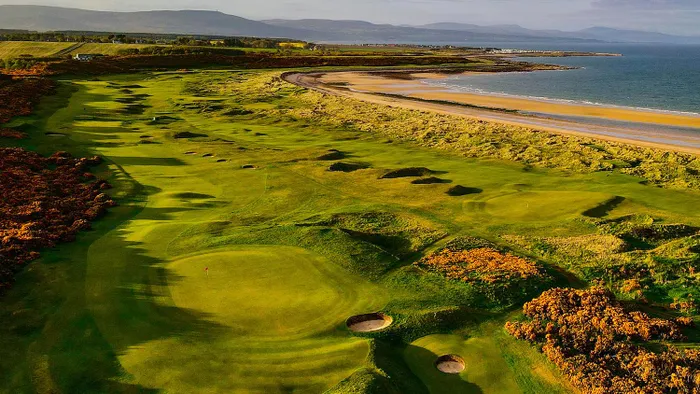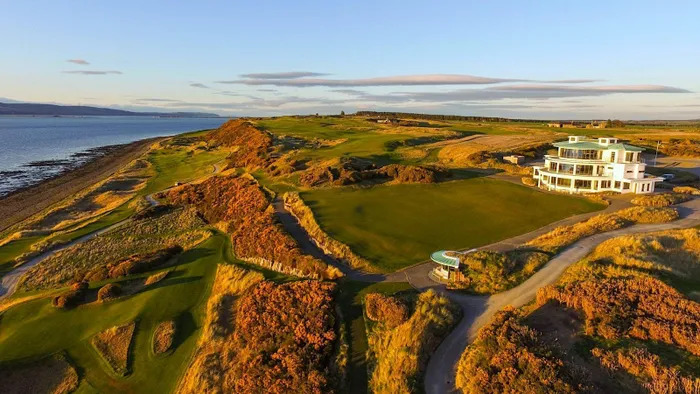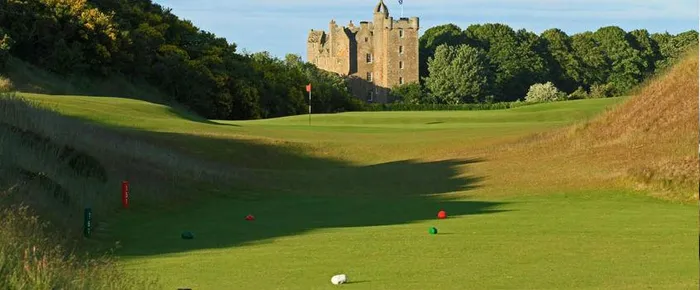Destination golf comes to a chilly corner of northern Scotland

The capital of the Highlands region, Inverness has historically been a gateway to inland adventures involving hunting rifles, fishing rods, walking sticks, whisky and (maybe) a sighting of the Loch Ness Monster. Today golf is being added to that list.
Image: File
James Ludden
For anyone working through their bucket list of must-play courses in golf-obsessed Scotland, dozens of venues line the eastern seaboard-with St. Andrews invariably at the top of the pile.
But Inverness, the nation’s northernmost city with a population of less than 50,000, is developing into a destination of choice for those wanting successive days of high-end golf, premium dining and quality accommodation. Improved travel connections and a marketing push to get more vacation companies to add the Highlands to their golf-inclusive packages have now lured more tourism dollars to one of the more remote corners of Europe.
The capital of the Highlands region, Inverness has historically been a gateway to inland adventures involving hunting rifles, fishing rods, walking sticks, whisky and (maybe) a sighting of the Loch Ness Monster. Nature-based tourism accounts for 40% of vacation spending across all Scotland, with the Highlands contributing an outsize chunk of that.
The landscape’s rugged scenery, combined with less-than-tropical weather and the fact that Inverness is a three-hour drive from the capital of Edinburgh, used to mean golf in the north was the preserve of people already in the know. Nearby Royal Dornoch Golf Club, for example, has long been rated among the top 10 courses in the British Isles.
But remote golf has increasingly become a must-do as social media influencers such as No Laying Up discuss the joys of tapping a small, white ball along gorse-flanked fairways while waves tumble onto the nearby shore.
Which is where Cabot Highlands comes in. It’s opening a second course near Inverness to the public in May next year, called Old Petty and designed by renowned golf architect Tom Doak. Castle Stuart Golf Links opened next door in 2009 and is one of four Cabot venues to figure in Golfweek’s list of top 100 international courses. Together, the two Inverness properties overlooking the chilly waters of the Moray Firth are expected to eventually host upwards of 50,000 rounds a year.
“We’re at a jumping-off point for all things Highlands, with golf at the forefront,” says Ben Cowan-Dewar, chief executive officer of Cabot.
Doubling down on developing golf properties in relatively distant corners is very much part of his DNA-Cowan-Dewar’s portfolio of luxury resorts ranges from Cabot Saint Lucia in the Caribbean to Norway’s Lofoten Links in the Arctic Circle. The adventure began with the opening of Cabot Links in 2012 and the creation of Cabot Cape Breton in Nova Scotia - also called Inverness.

Royal Dornoch Golf Club is the oldest and most celebrated of the windswept courses of the area.
Image: File
Connections and Whisky
The area has long been rich in golfing pedigree. Dornoch was founded in 1877, and Nairn down the coast from Cabot was established 10 years later. Add in the uber-exclusive Carnegie Links at nearby Skibo Castle, the potential addition of another course at Coul Links and Dornoch’s expansion plans, and suddenly an area within a half-hour drive of Inverness becomes a magnet for the iron-wielding golf connoisseur. The city also has an international airport, and for anyone not so keen on being outdoors, world-class distilleries like Dalmore and Glenmorangie are a short cab ride away.
Cowan-Dewar is betting that individuals will be prepared to pay hundreds of pounds for the privilege of golfing on eastern Scotland’s springy seaside turf, as well as for rent one of Cabot’s three luxury cabins (four double-bedrooms each). Although golf has been played in the area for at least 400 years, rarely has it been so refined.
Currently, tourists tend to cherrypick a couple of sites in the Highlands area before focusing on the three-hour drive south to St. Andrews-regarded as the spiritual home of golf and the venue for a record 30 British Open championships-or longer if they want to take in Trump International Links near Aberdeen, which opened a second course last summer for big spenders.
Now Cabot and Dornoch are racing to lure international tourists who want to test their prowess in the remote north without having to travel too far for the next tee time. They drive on the left here, after all.
For course designer Doak, who first came to Scotland in the 1980s on a scholarship to study golf courses, there’s an easy solution for the North American traveler wanting to sample the offerings near Inverness and also play premium courses down the coast into Angus and Fife. “If they want to play St. Andrews, they can come over some other day,” he says.

Cabot Highlands is opening a second course to the public in May next year
Image: Suppplied
Machine Over Nature
Cabot is Doak’s third foray into course design in the British Isles-his first was to remodel the Renaissance about 20 miles along the coast from Edinburgh, and his second was at St. Patrick’s Links at Rosapenna in northwestern Ireland. At St. Patrick’s, Doak used the contours of the land to route his holes through the dunes. At his latest site-it’s called Old Petty after a 19th century church that flanks part of the course-bulldozers and diggers were employed to the max. Because farmers had worked the land for decades, trying to keep the soil moist for their crops, Doak had to take off as much as four feet of topsoil, dig down to the gravel and build it up again. Drainage is a key element to ensuring a golf course works, and that’s something of a challenge in Scotland’s damp climate.
Every rumpled fold in the fairway or sightline to the sea is a product of machine rather than nature, but rarely does the golfer feel artificiality is at play. The third hole takes you past the brooding 17th century Castle Stuart with its crowned tower-a bad hook for a right-handed player could result in the sound of a Titleist ProV1 smacking into masonry from the time of James VI of Scotland (aka James I of England). Every teeing area is a free-formed sweep of turf. It’s a course to be enjoyed on foot rather than in a cart.
The imaginative green complexes-the vision of Doak’s England-born associate Clyde Johnson-mean that firing a shot directly at the flag from 150 yards is risky. Negotiating the surrounds of the greens is key to shooting a good score.
If there’s one relative rarity that could upset the purists, it’s that the opening drive traverses the 18th fairway. It’s a reminder, Doak says, that golf is not a game to be rushed. And if you want to relax and get some refreshments, a red-roofed bothy (basically a one-room stone shelter) comes into play as early as the fourth green.
Overall, for a course that has only a handful of holes next to the water, Old Petty feels as much a links experience as its older sibling does. “It’s a terrific complement to the first course, which I adore,” says Cowan-Dewar. “I want people to debate afterwards which course was the better. It’s a conversation that will drive the business.”

The Castle Stuart Golf Links is one of the area's big four.
Image: Supplied
Dornoch’s Plan
Similar conversations are on the horizon at Dornoch, 25 miles to the north. Plans are afoot to extend what’s on offer beyond its championship course, described by five-time British Open winner Tom Watson as a “natural masterpiece.” The program entails upgrading the Struie course, building a third course, developing the practice facilities and making a par-3 playing area. Work is unlikely to start for another couple of years.
“We want three different levels and three different golf offerings,” general manager Neil Hampton says. “We want to make it a destination, regardless of your level of golf or age.”
Both Hampton and Cowan-Dewar at Cabot were at pains to note they’re not in competition. The ultimate aim, says Hampton, is to encourage visitors to extend their stay in the Highlands.
Other factors might help with that. The recent run of scorching summers in southern Europe has dimmed the allure of slogging around popular courses in Spain and Portugal. And outside of northern Scotland, there are few other parts of the world where you can aim your putt across a pristine green in the soft twilight sun at 10 p.m.
The potential boost from more tourists isn’t lost on local hospitality groups grappling with rising staffing costs and tight budgets. Given that a recent study published by Sheffield Hallam University showed that golfers visiting St. Andrews alone generate £317 million for the economy, Inverness businesses would seem poised to also benefit by a significant amount.
For driver James Gaw, who’s been ferrying golfers from course to restaurant for 30 years, the prospect of more visitors is one to relish. “It can only be beneficial. Every new course that opens up seems to be positive for the local community,” he says. “When I first came into the business in the mid-’90s, golf was really only for extremely wealthy people. Now, we’ve got guys with regular jobs who come here on a bucket-list trip. It’s grown exponentially in the time I’ve been driving.” - With assistance from Maddie Parker and Greg Ritchie.